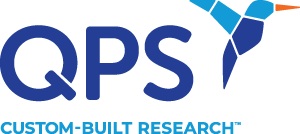The notion of suspended animation, often portrayed in science fiction, is based on the idea that bodies can be cryopreserved for a long time and then rewarmed and returned to full functioning. In a nod to this concept, groundbreaking animal research has demonstrated that it’s possible to revive a cryopreserved mammalian organ and transplant it, suggesting a potential solution to the tight time constraints that currently restrict human organ transplantation.
Researchers at the University of Minnesota completed the work and published their findings in Nature Communications. They successfully transplanted healthy rat kidneys that had been cryopreserved — stored in liquid nitrogen at minus 150 degrees Celsius — and carefully rewarmed. A total of five rats received the organs, which had been cryogenically stored for up to 100 days. “This is the first time anyone has published a robust protocol for long-term storage, rewarming, and successful transplantation of a functional preserved organ in an animal,” said the study’s co-senior author John Bischof, a mechanical engineering professor and director of the University of Minnesota Institute for Engineering in Medicine, in a statement. “All of our research over more than a decade and that of our colleagues in the field has shown that this process should work, then that it could work, but now we’ve shown that it actually does work.”

A Paradigm Shift in Transplant Medicine
With more than 100,000 Americans on organ transplant waiting lists and only 41,225 transplant surgeries performed last year, the need for innovative solutions in transplant medicine is undeniable. The current system revolves around the race against time, where organs must be matched with recipients and transplanted within hours of procurement. However, organ cryopreservation and rewarming could reduce these constraints and usher in a new era of transplant medicine.
The Promise of Cryopreservation and Rewarming
The researchers used an organ cryopreservation method known as vitrification, which involves quickly cooling the organ in cryoprotective chemicals to avoid ice formation. The process preserves the organ in a glass-like state. A controlled rewarming procedure follows this process. For the rat kidneys, they used a technique called nanowarming to rapidly and uniformly warm the organs. The method deploys iron oxide nanoparticles in a cryoprotectant solution dispersed through the organ’s blood vessels. The nanoparticles serve as microheaters when activated using electromagnetic waves. They are flushed out after rewarming. While the rewarmed organs didn’t become fully functional as quickly as kidneys that had not been vitrified, they did regain complete function within 30 days.
Challenges of Scaling Up
The next steps involve scaling up the technology to larger animals, like pigs, and eventually humans. However, this presents significant scientific and logistical hurdles. The human body’s complexity, differences between animal models and humans, and the need for extensive clinical trials make the journey ahead challenging. Moreover, creating a nationwide network of cryopreserved organ banks will require careful planning and consideration of ethical implications.
A Vision for Safe and Efficient Transplants
Despite these challenges, the recent advances offer hope for a transformed organ transplant system. The additional time that would be gained with cryopreservation would allow for more thorough screening of organs, better organ matching between donors and recipients, and overall improved safety and efficiency in the transplant process. In addition, fewer donor organs would go unused.
While the road ahead is long and uncertain, cryopreservation has the potential to expand access to life-saving transplants and offer hope to those waiting for a donor organ.
Did you enjoy this blog post? Check out our other blog posts as well as related topics on our Webinar page.
QPS is a GLP- and GCP-compliant contract research organization (CRO) delivering the highest grade of discovery, preclinical and clinical drug research development services. Since 1995, it has grown from a tiny bioanalysis shop to a full-service CRO with 1,200+ employees in the U.S., Europe and Asia. Today, QPS offers expanded pharmaceutical contract R&D services with special expertise in neuropharmacology, DMPK, toxicology, bioanalysis, translational medicine and clinical development. An award-winning leader focused on bioanalytics and clinical trials, QPS is known for proven quality standards, technical expertise, a flexible approach to research, client satisfaction and turnkey laboratories and facilities. Through continual enhancements in capacities and resources, QPS stands tall in its commitment to delivering superior quality, skilled performance and trusted service to its valued customers. For more information, visit www.qps.com or email [email protected].





